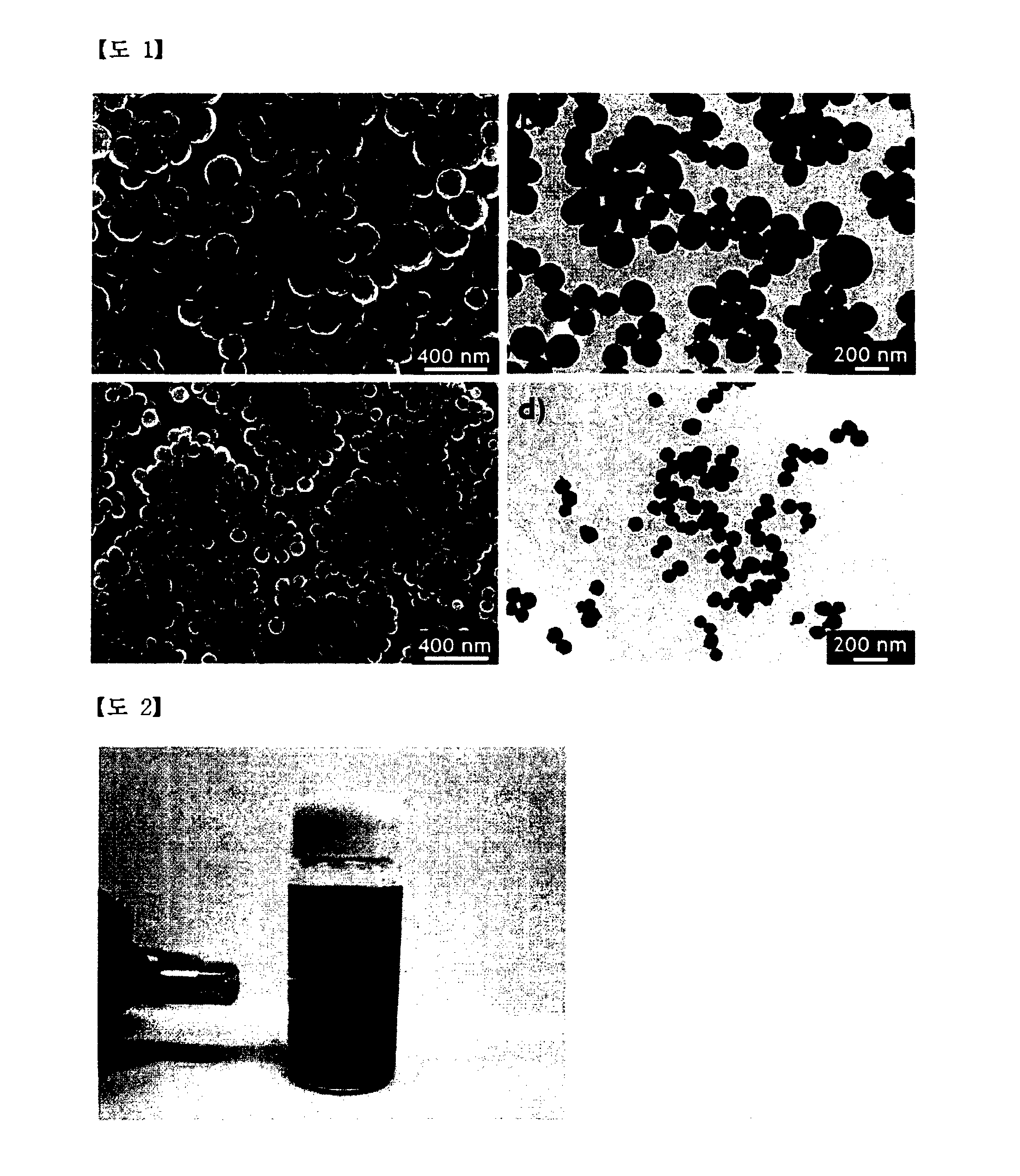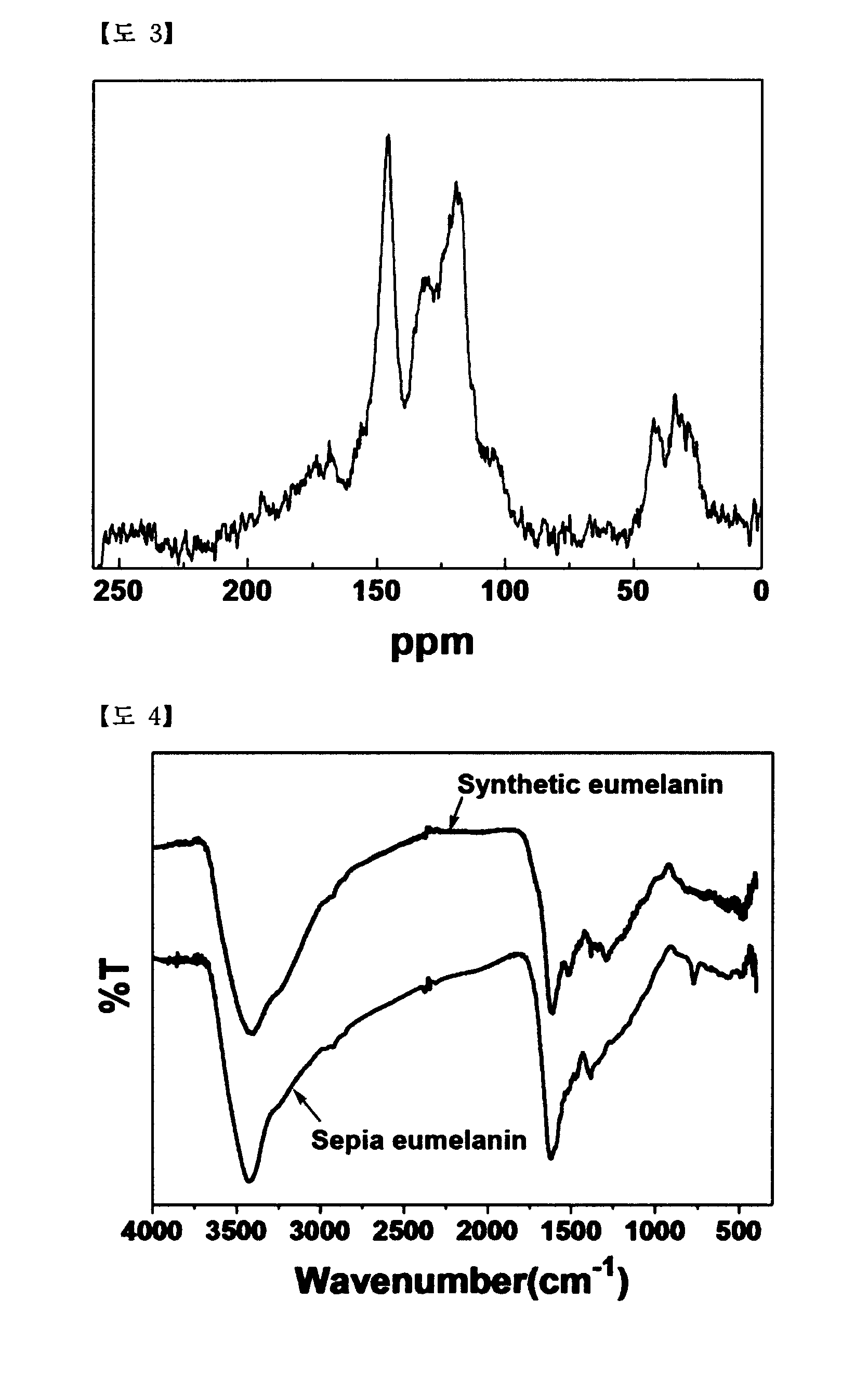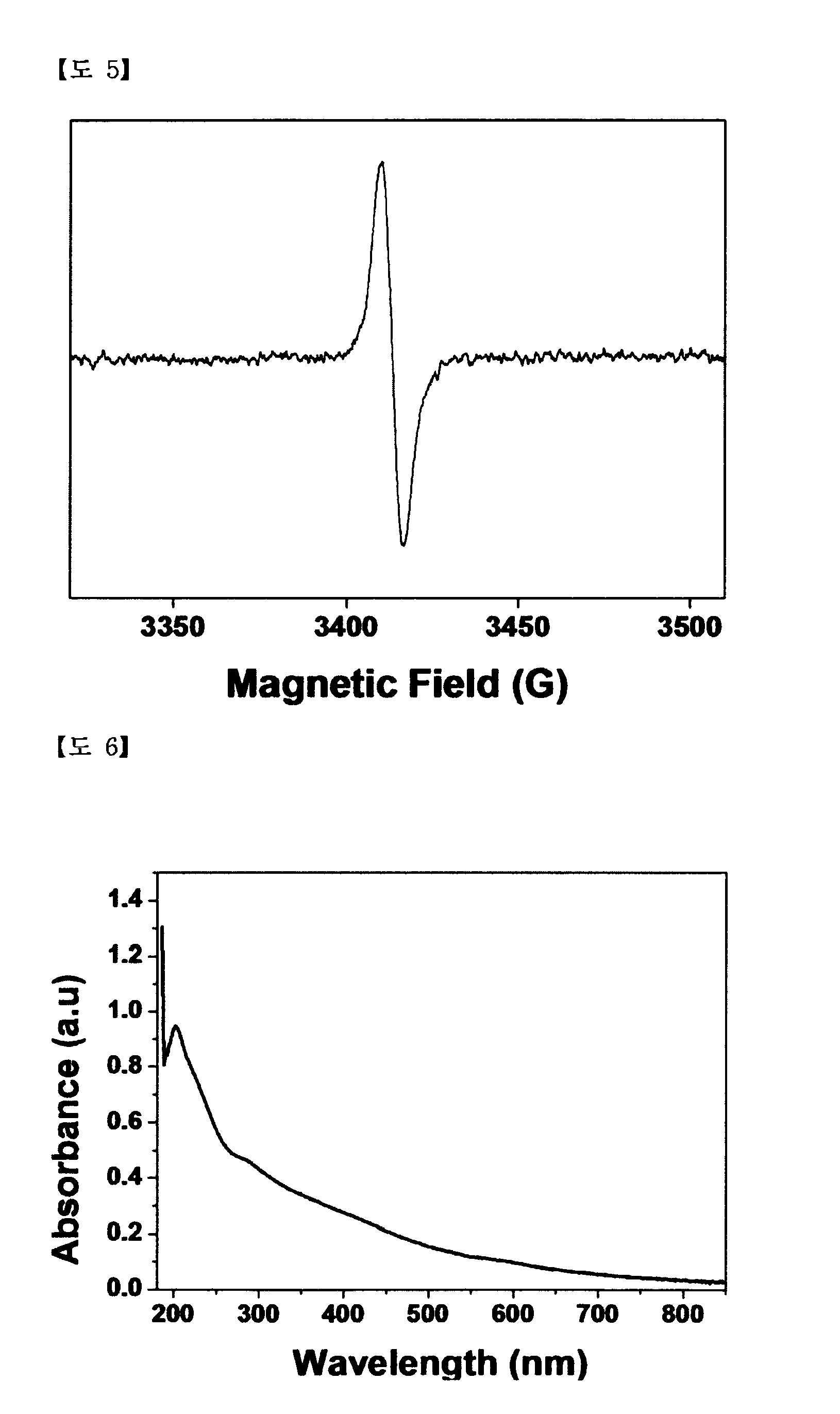Nano-sized melanin particles and method of producing same
a technology of nano-sized melanin and particle size, which is applied in the direction of cellulosic plastic layered products, natural mineral layered products, transportation and packaging, etc., can solve the problems of artificially synthesized melanins having a latent limitation in their practical application, production amount is not constant, and no accepted standard procedure s
- Summary
- Abstract
- Description
- Claims
- Application Information
AI Technical Summary
Benefits of technology
Problems solved by technology
Method used
Image
Examples
example 1
[0082]180 mg of dopamine hydrochloride [(3,4-dihydroxyphenethylamine)HCl] was dissolved in 90 mL of deionized water (D.I. water) to prepare a dopamine.HCl-containing aqueous solution (pH=6.8) having a molar concentration of approximately 10.5 mmol / l. As shown in FIG. 7, the dopamine.HCl-containing aqueous solution was mixed with 760 μl of 1 N NaOH solution (molar ratio of dopamine.HCl:NaOH=1:0.8) at 50° C. for neutralization, and stirred in air for 5 hours for polymerization. Subsequently, the resulting product was purified by centrifugation at room temperature at a speed of approximately 18000 rpm for 20 minutes, and this procedure was repeated three times. Then, size selection was performed by centrifugation at a speed of approximately 4000 rpm for 10 minutes, so as to obtain 70 mg of melanin particles dispersed in water. At this time, the obtained melanin particles had a size of approximately 80-100 nm.
[0083]Herein, as spontaneous oxidation of the mixture occurred, the pH of the ...
example 2
Example 8
[0091]As suggested in the following Table 1, melanin particles were prepared in the same manner as in Example 1, except that the mixing ratio of dopamine.HCl-containing aqueous solution (a) and NaOH (b) (molar ratio of a:b), the molar concentration of dopamine.HCl-containing aqueous solution (c) (mM, mmol / l), and the temperature (t) of acid-base neutralization reaction of dopamine.HCl-containing aqueous solution and NaOH were varied.
TABLE 1Example 1Example 2Example 3Example 4Example 5Example 6Example 7Example 8Molar ratio of1:0.81:0.421:0.81:11:0.81:0.81:0.81:0.8a:bMolar10.510.510.510.5721.110.510.5concentrationof c (mmol / l)Neutralization5050505050502070temperature(° C.)
experimental example 1
Changes in Melanin Particle Size According to Reaction Conditions
[0092]The following experiments were performed in order to examine the factors influencing the particle size upon the preparation of melanin particles according to the present invention.
[0093](1) FIG. 8 shows pH changes of dopamine.H+Cl−-containing aqueous solution depending on reaction time upon preparation of melanin particles according to Examples 2 to 4. FIGS. 9 and 10 show TEM images of the melanin particles prepared in Examples 2 and 4, respectively. As shown in FIG. 8, it can be seen that pH changes depending on the mixing ratio of dopamine.H+Cl− and base affect the shape and size of the melanin particles. In addition, the melanin particles prepared in Example 2 (molar ratio of a:b=1:0.42) [see FIG. 9] had the largest size, compared to the melanin particles prepared in Example 4 (molar ratio of dopamine.HCl(a):NaOH(b)=1:1) [see FIG. 10], suggesting that as the molar ratio of the base to dopamine.H+X− increases, ...
PUM
| Property | Measurement | Unit |
|---|---|---|
| temperature | aaaaa | aaaaa |
| mean diameter | aaaaa | aaaaa |
| size | aaaaa | aaaaa |
Abstract
Description
Claims
Application Information
 Login to View More
Login to View More - R&D
- Intellectual Property
- Life Sciences
- Materials
- Tech Scout
- Unparalleled Data Quality
- Higher Quality Content
- 60% Fewer Hallucinations
Browse by: Latest US Patents, China's latest patents, Technical Efficacy Thesaurus, Application Domain, Technology Topic, Popular Technical Reports.
© 2025 PatSnap. All rights reserved.Legal|Privacy policy|Modern Slavery Act Transparency Statement|Sitemap|About US| Contact US: help@patsnap.com



